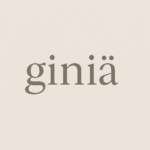The term tarnplanen is gaining traction in design circles, particularly within digital aesthetics, urban branding, and conceptual art. Though it may look unfamiliar at first, tarnplanen has become a modern catchword that reflects a growing desire for creative structure and fluid identity in both design and everyday life.
Tarnplanen doesn’t belong to any standard dictionary, and that’s part of what makes it intriguing. It often appears in branding, lifestyle blogs, and UI/UX communities where ideas like symmetry, planning, and adaptability are valued. If you’re involved in design, creative direction, or cultural storytelling, you’ve probably encountered tarnplanen already—even if you didn’t know what to call it.
The Concept Behind Tarnplanen
At its core, tarnplanen is about intentional design within fluid spaces. It’s a blend of tactical planning and adaptable aesthetics, where every element serves both structure and emotion. The name itself feels Scandinavian in style, often associated with minimalist visuals and modular design strategies.
Tarnplanen can be thought of as a mindset—one that prioritizes thoughtful planning without sacrificing creativity. From visual identity systems to flexible layouts and intuitive navigation, the idea behind tarnplanen is to build systems that can shift, evolve, and still remain grounded.
How Tarnplanen Connects With Modern Design
Modern design isn’t just about looking good—it’s about making sense. Tarnplanen reflects this shift by encouraging creators to think deeper about how structure affects experience.
Where Tarnplanen Shows Up
- Grid-based UI layouts with flexible components
- Modular design systems in branding
- Urban planning that blends nature and technology
- Visual storytelling with layered, intentional sequencing
In all these cases, tarnplanen isn’t about rigid structure—it’s about a planned freedom. Each element has a purpose, and the entire experience feels balanced yet open to change.
Key Elements of Tarnplanen
To better understand how tarnplanen functions in design, here are some of the key characteristics that define the concept:
Tarnplanen Design Traits
| Element | Description |
|---|---|
| Modularity | Systems built from parts that fit together |
| Flexibility | Adaptable across screen sizes and formats |
| Symmetry & Flow | Balance without static repetition |
| Soft Color Theory | Muted tones that evoke calm and clarity |
| Micro-Structure | Small details aligned to the overall system |
These traits reflect an approach that blends design thinking with emotional intelligence. It’s not just about planning visuals—it’s about planning experience.
Why Brands Are Embracing Tarnplanen
The idea of tarnplanen aligns with current branding trends: subtlety, structure, and adaptive presence. More brands are shifting away from bold, loud design and toward thoughtful, minimalist presentations that feel honest and organized.
Tarnplanen in Brand Identity
- Clean grid layouts with intentional white space
- Logo systems that scale and shift depending on context
- Consistent yet flexible color palettes
- Fonts chosen for legibility and personality
With digital users expecting seamless interactions, tarnplanen offers a structured approach to clarity. Whether it’s a landing page or a physical product, the experience feels composed and inviting.
How Tarnplanen Applies Beyond Design
While tarnplanen is commonly used in design conversations, its core philosophy is relevant in other areas too—like life organization, journaling, architecture, and even education.
Lifestyle Examples of Tarnplanen Thinking
- Bullet journaling with modular planning pages
- Home layouts that blend aesthetic with utility
- Course structures that guide students but allow personal flow
- Mind-mapping or digital boards that organize creativity
It’s a reminder that structure can create freedom when done right. Tarnplanen isn’t about locking yourself into a system—it’s about designing one that evolves with you.
How to Apply Tarnplanen to Your Creative Process
You don’t have to overhaul your workflow to embrace tarnplanen. In fact, the idea is to enhance what you already do by making it more mindful and modular.
Simple Ways to Start
- Use a design grid for every new layout
- Break content into digestible, repeatable blocks
- Choose color palettes with intentional emotional tones
- Plan for adaptability—assume your work will shift
Whether you’re building a website, developing a brand, or crafting digital art, the tarnplanen mindset can bring clarity and cohesion.
Who Benefits Most From Tarnplanen
If you’re a designer, creator, educator, or brand strategist, this concept can help bring more meaning to your projects. But even outside professional work, tarnplanen can add value to anyone trying to build something lasting, intentional, and flexible.
- UI/UX designers shaping digital experiences
- Independent artists managing portfolios
- Writers organizing visual narratives
- Architects or planners developing smart spaces
In all cases, the power of tarnplanen lies in structure that doesn’t suffocate creativity.
FAQs About Tarnplanen
What does tarnplanen mean?
Tarnplanen is a modern design and planning concept that focuses on modularity, structure, and visual coherence. Though it’s not a standard dictionary word, it’s widely used in creative and branding circles.
Is tarnplanen a real word?
Not officially. It appears to be a coined term with roots in design theory, likely inspired by Scandinavian aesthetics and planning ideologies.
How do I use tarnplanen in design?
Start with a flexible layout system. Use consistent spacing, modular components, and a limited color palette to bring balance and clarity. Apply the concept across digital and print media.
Can tarnplanen be used in personal organization?
Yes. Many people use the principles of tarnplanen in bullet journaling, productivity planning, and lifestyle design. It’s about intentional structure that adapts as you go.
Why is tarnplanen trending now?
The digital world is overloaded with noise and clutter. Tarnplanen stands out by offering calm, clarity, and thoughtful design. Brands and creators are embracing it to build trust and maintain flexibility.










